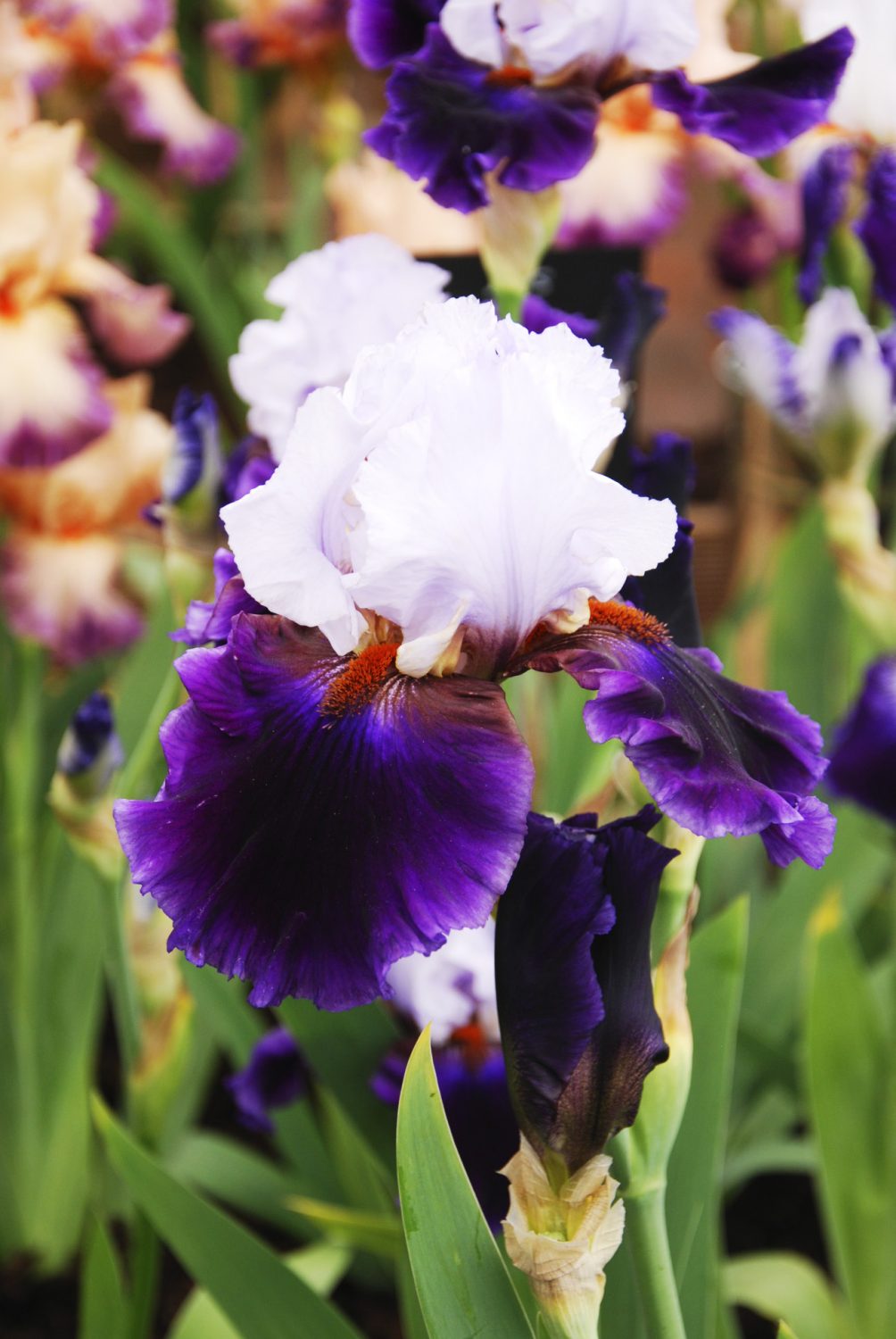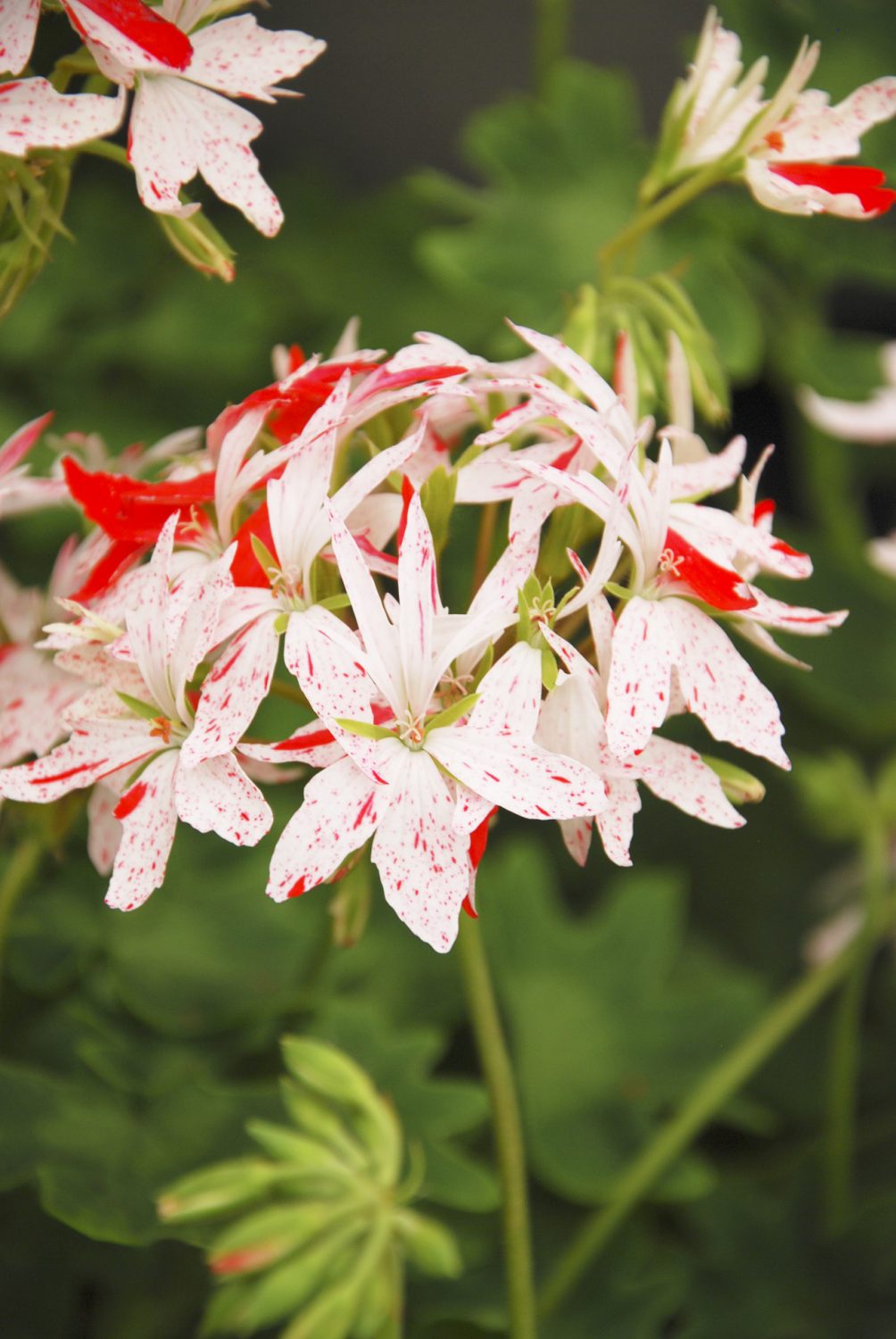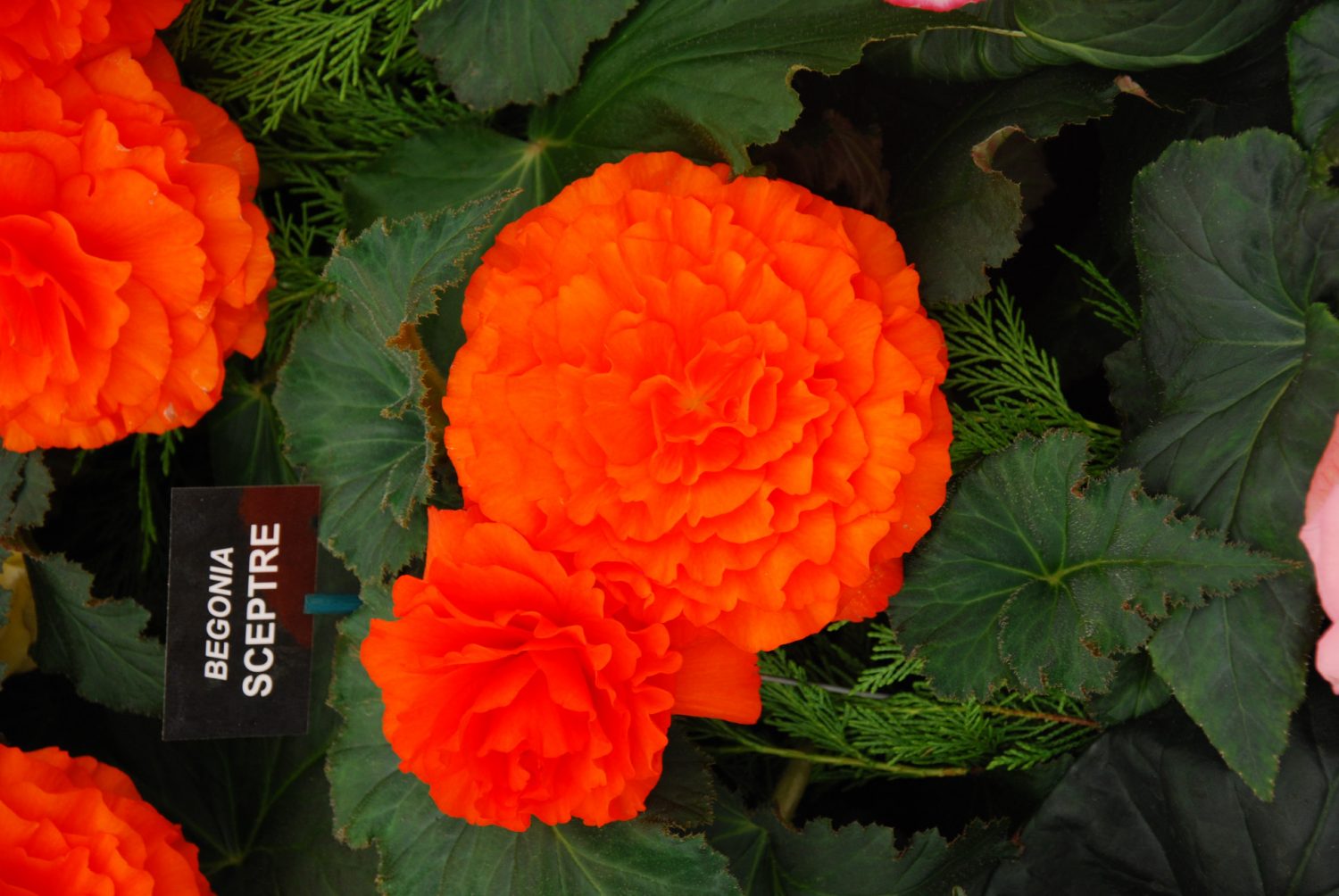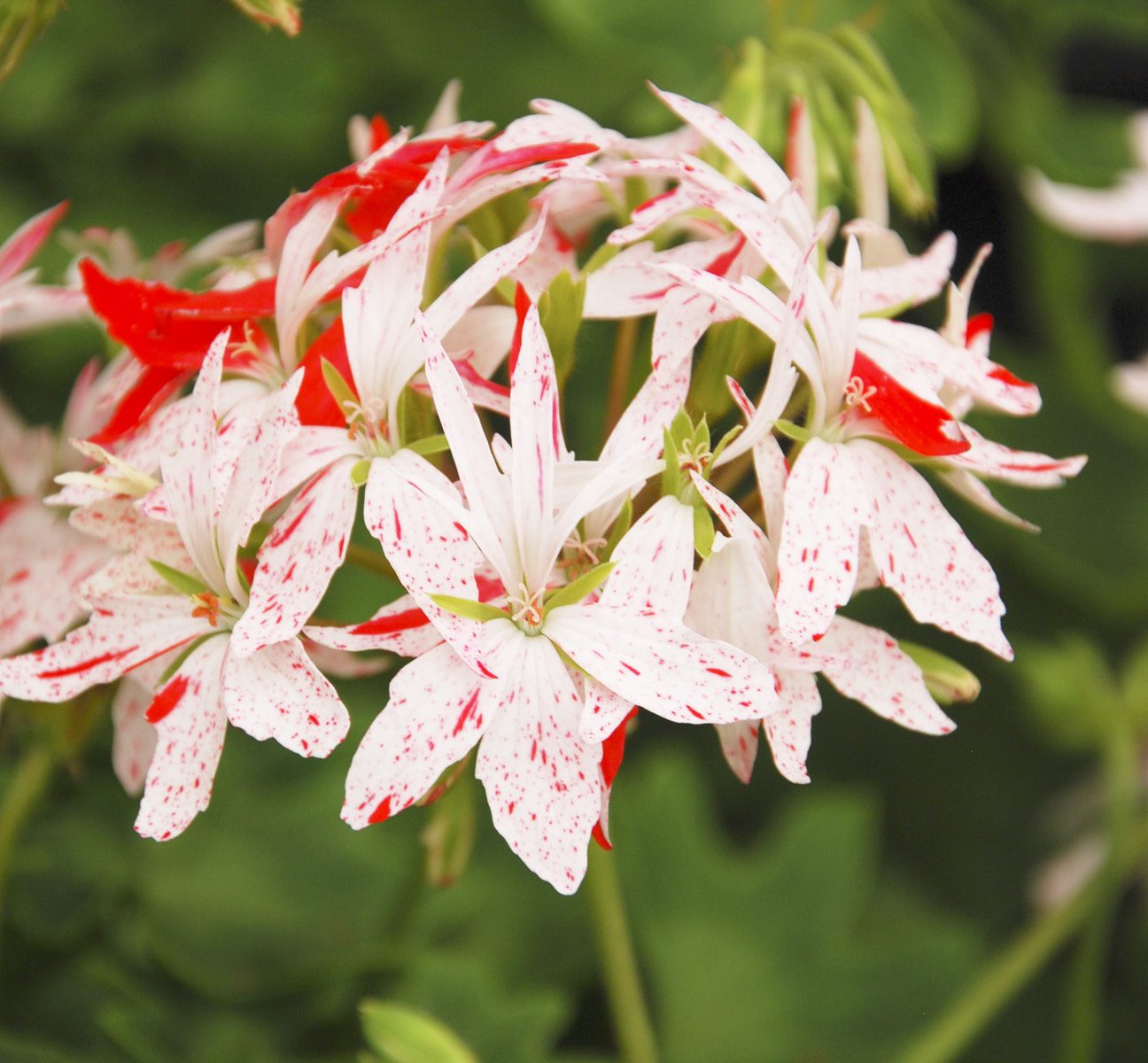In the days before child booster seats and seat belts, I took my turn taking six little boys to school. We would wind away through the back streets of Streatham to get down to Dulwich. In the back I would have a motley selection of characters; a lot of entertaining chat and gentle bickering and maybe one or two catching up with homework or bizarrely attempting to do their overdue violin practice in a moving car. This became even more interesting, and I use that word advisedly, when we came to a T junction or went round a corner.
And then there would be my son revising his Latin vocabulary homework. The other son, who went into horticulture, always remembers from those journeys the word ‘gladiatus’ meaning ‘swordlike’ and thinking about the gladiators fighting in the Roman Colosseum. Now, all these years later, he remembers it as a description of the leaf shape of gladioli and wishes that he’d taken more interest in his Latin lessons!
Most gardeners have some knowledge of ‘botanical Latin’ and how it helps when you are trying to choose a plant or find out more about them. It’s the same really when you are travelling. As we know, it helps to have some basic understanding of the local language. A plant’s name is a unique label and it can tell you where the plant originated, maybe who discovered it and what shape and colour its leaves and flowers might be. We know that Latin is the root of many languages and once you get to recognise the derivation of plant names it really is so useful. Botanical names though are constantly evolving and in some cases changing as scientists recognise more similarities and maybe differences in plants. For instance the genus name Cimicifuga has now completely disappeared and become Actaea. All confusing at first but you do gradually get used to it. It is also the case that we are also having to accept earlier names for familiar names as archives in countries like Russia are being studied.
Why Latin? For centuries Latin was the language of science and learning in Europe and plants were described in a form of Latin which developed into a special botanical language which included references to sources like Ancient Greek and Arabic. It wasn’t until Carl Linnaeus, a Swedish professor of medicine at Uppsala University in Sweden took things in hand by developing the binomial system of naming all living organisms – a life’s work – that things became more orderly and recognisable. He set out his ‘two name system’ in a seminal work, Species Plantarum in 1753 which was immediately widely accepted.
The absolute bible at college was The Hillier Manual of Trees and Shrubs which much to our horror didn’t have pictures. Once we’d got over the initial shock and began to understand how plant names were made up we realised that all the essential knowledge concerning the plants in it was there. All plants are in a family e.g. Rosaceae which encompasses an enormous array of plants including roses and the flowering crab apples which include so many garden favourites.
Once the family name is established, a plant is known by its Genus and its species e.g. Rosa rugosa. These are always in italics as a sort of etiquette and the Genus name always begins with an upper case letter. The species name usually is very useful in recognising a plant in that it does tell us perhaps a structural detail of the plant or maybe it’ll tell us the plant’s place of origin or its habitat or maybe its habit of growth. All essential knowledge for finding that perfect plant. For instance, Geranium sylvaticum prefers some shade as it originates in wooded areas whilst Geranium pratense is found in the wild in meadow land.
I bought Euphorbia palustris from a nursery at the excellent Gardening for Disabled Trust Plant Fair recently and now realise that with palustris meaning ‘of marshland’ my original planting hole will have to be filled in and another site found. Tricky at the moment as the whole garden is so dry and even the pond area loses moisture in the summer as the water level drops so drastically. Unlike the leader of the Western World, I believe in global warming!
If the plant has a cultivar name, in other words it is a form of the species that has been deliberately or maybe naturally hybridised in a garden or nursery, it has a third name. This is always recognisable in that it is written within single apostrophes and never in italics. Since the International Code of Nomenclature was established in 1959 it hasn’t been permissible to use Latin names for a new cultivar, i.e. a perennial daisy, Bellis perennis which might have a new double form in white, could not be called Bellis perennis ‘Alba Plena’ simply meaning double white.
There are thousands and thousands of cultivated forms of species plants and their breeders register them as having PBR – that is Plant Breeders Rights. Cultivar names from countries like Poland which breeds some wonderful clematis are worth getting to know. I particularly like Clematis ‘Blekitny Aniol’ which is so much easier to imagine when you know that the name means ‘Blue Angel’.
In the wild there are plants that evolve that are similar to their species but that are subtly different maybe due to the conditions they have adapted to for survival. So just to complicate matters, a subspecies is a variant on the species and would be recognised in the plant’s description by writing first the Genus, then the species and then subsp. and finally the subspecies name. An example might be one of Gertrude Jekyll’s favourite plants, the spectacular Mediterranean spurge and well known to gardeners, Euphorbia characias subsp. wulfenii
Finally, very many plants have names which commemorate great gardeners or the intrepid plant hunters who brought plants in to cultivation and who had the most extraordinary experiences all over the far flung corners of the world whilst doing so.
Sir Joseph Banks is often thought of as the father of plant hunting. He came from an affluent family in the eighteenth century and rather than take the Grand Tour to Italy as many young men of means did then he decided to take his tour ‘around the globe’. He joined an expedition on board HMS Endeavour to the South Seas under the captaincy of Captain James Cook. The Admiralty ostensibly sent the ship out to observe the transit of Venus in the South Seas. Can you imagine how exciting this must have been for the young Banks as he saw it as an opportunity to collect both flora and fauna during the journey. The extraordinary story of the HMS Endeavour’s epic journey is well worth reading but Banks’s legacy lives on in the establishment of Kew Gardens as a centre for botanical excellence and in the approximately eighty species of plant named after him and in the case of the glorious early Banksian rose, after his wife, Lady Dorothea.
TEST
Iris ‘Magnétisme’
TEST
Pelargonium ‘Vectis Glitter
TEST
- words: Sue Whigham
You may also like
Go with the Flow
Sue Whigham shares some valuable new-to-gardening advice I’m sure that by now we should be used to the rain but I’m not entirely sure that we are. We had a dry, sunny day the other day and how everybody’s mood...
Farm Fables
Jane Howard gets to the bottom of why so many ponds have disappeared across the High Weald I have a new passion, almost an obsession, it’s about ponds. And there’s a distinct possibility I might become a bit of a...
Hedge Issues
Sue Whigham takes a meander along nature’s verdant and vital corridors Recently the BBC’s Today programme carried a feature about England’s hedgerows which created a lot of interest among listeners. On the strength of that, Martha Kearney interviewed one of...















